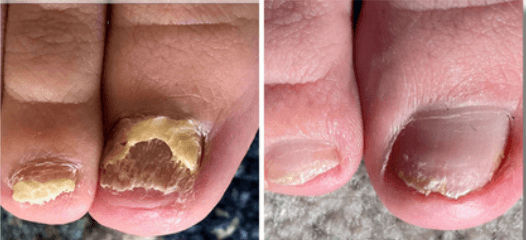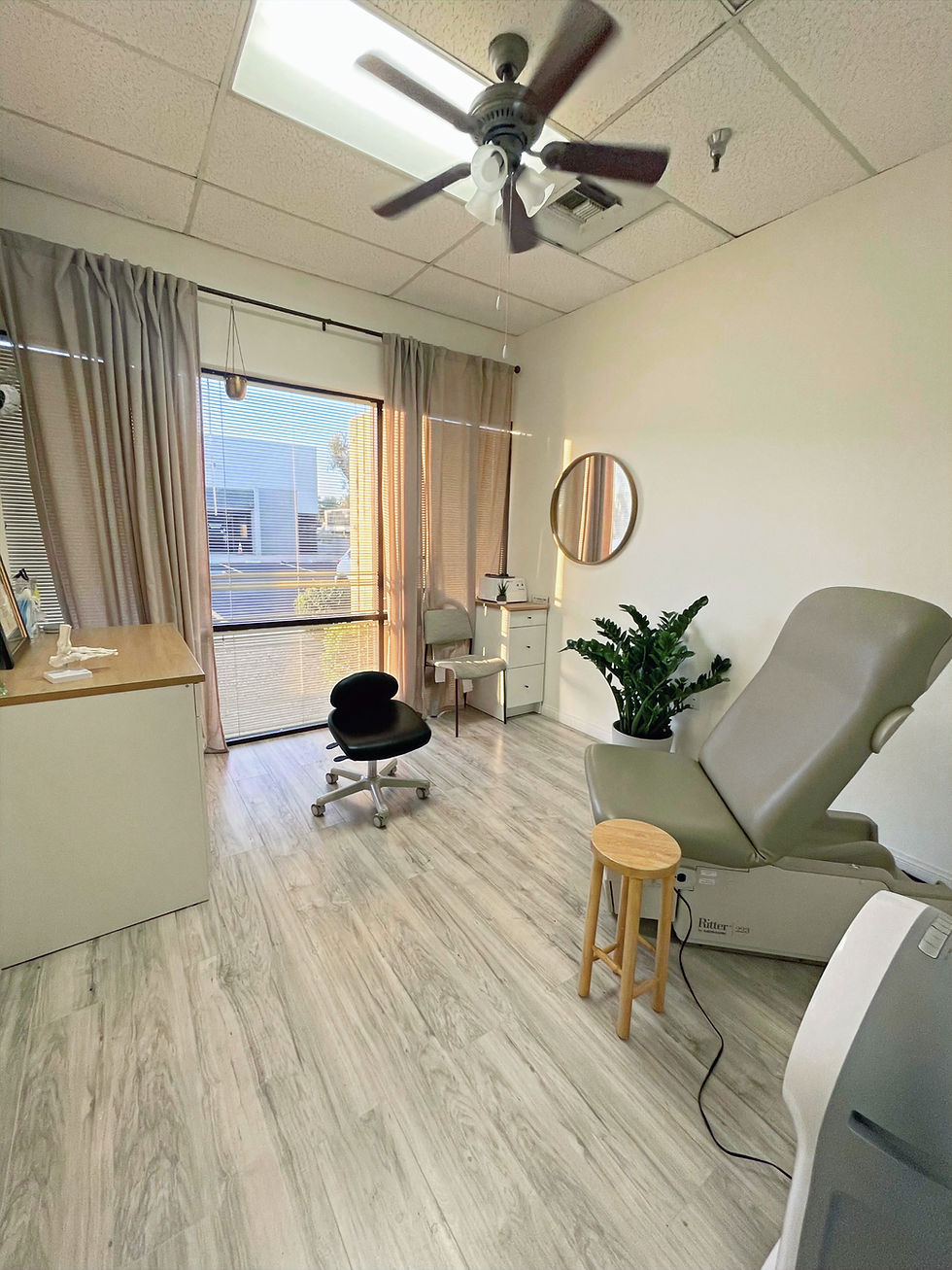Laser vs. Oral Medications for Toenail Fungus: Which Works Best in Phoenix?
- Sondema Tarr
- Sep 18
- 3 min read
Updated: 6 days ago

Toenail fungus can that seems like forever to go and frustrating. If you’ve been dealing with thick, discolored nails, you’ve probably heard about two main treatment options: laser therapy and oral antifungal medication.
As a Phoenix podiatrist, I’m often asked which is better. The answer depends on your goals, your health, and how bad the infection is. Let’s walk through the pros and cons so you can make an informed choice.
How Laser for Treatment for Toenail Fungus Works

Laser treatment uses focused light to target the fungus under your nail without damaging your skin.
The energy from the light beam creates an immune response, and wakes up your cells to attack and kill the fungus.
At Direct Podiatry AZ, we use a modern Class IV laser designed for comfort and safety. There’s no downtime—you can put your shoes back on and head out right after your session.
Learn more: Laser Toenail Fungus Treatment Cost in Phoenix
Related: Is Laser for Toenail Fungus Safe?
How Medications for Toenail Fungus Work

Pills like terbinafine or itraconazole work from the inside out. They circulate through your bloodstream and help new toenails grow in clearly.
While they do work, these medications can interact with other drugs in your body, and may require liver function monitoring through regular blood tests.
Some people also notice side effects such as stomach upset or skin rashes.
Differences in Treatment Timeline for Toenail Fungus

Both options take patience. Because toenails grow out much slower than fingernails do, especially a big toenail, it can take months, or even upwards of a year, to see the complete effects of either treatment, whether you choose laser, or medication.
Laser treatment: usually 6 sessions, spaced a few weeks apart. You’ll see improvement as the toenail grows over several months.
Oral medications: typically 12 weeks of daily pills, plus time for clear toenail to grow.
Success for either treatment depends on how bad your toenail fungus infection is, nail thickness, and your home care routine (keeping nails trimmed, disinfecting shoes, treating athlete’s foot if present), as well as your overall health status.
An integrative podiatry approach, that I use for my patients as well addresses things like your diet, any underlying medical problems, stress, and other problems that can make it much harder for your immune system to clear this toenail fungus.
Safety & Possible Side Effects from Laser Treatment For Toenail Fungus
Laser: Very safe. Most patients feel gentle warmth; there’s no risk of liver damage.
Oral medications: Can affect the liver or kidneys, and may interfere with other prescriptions. Routine bloodwork is often recommended.
Cost of Laser vs Medication for Toenail Fungus
Laser is usually an out-of-pocket service, but it’s a one-time package with no labs or monitoring.
Oral medication is often covered by insurance, but you may pay for office visits and bloodwork. If a second round is needed, costs can add up.
Which Is Right for You?

You might lean toward laser if you:
Prefer a drug-free solution
Have mild or moderate fungus
Want to avoid lab work or potential medication side effects
Or choose oral medication if you:
Have a very severe infection
Don’t mind blood tests every few weeks
Some cases benefit from a combination approach of both pills and laser, esepcially if you have Athlete's Foot alone with toenail fungus.
A Phoenix Podiatrist’s Perspective
In my practice, more and more patients choose laser because it’s safe, comfortable, and lets them usually avoid medication. But every situation is different. The best way to know which treatment will work for you is a personalized exam.




Comments